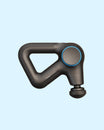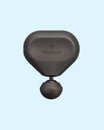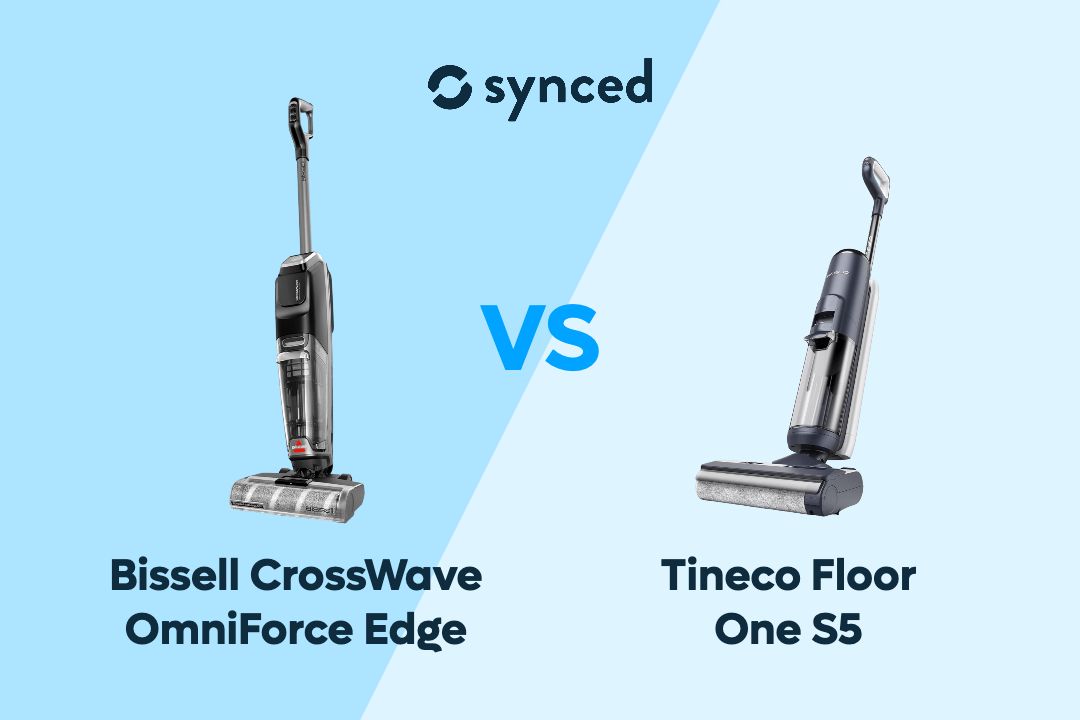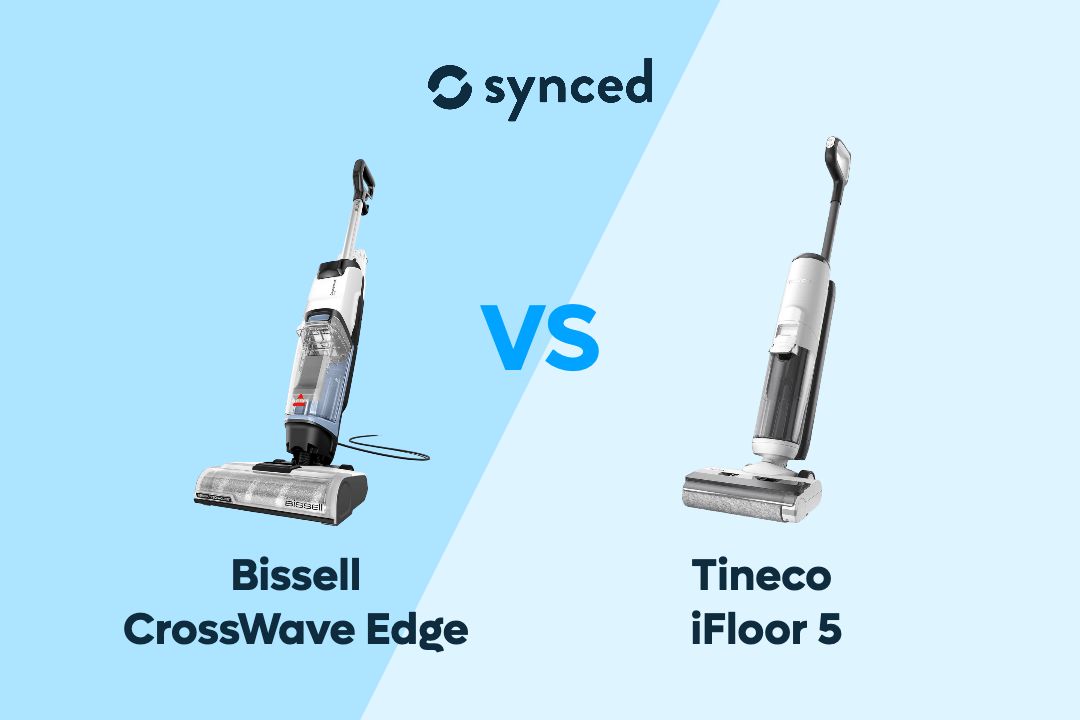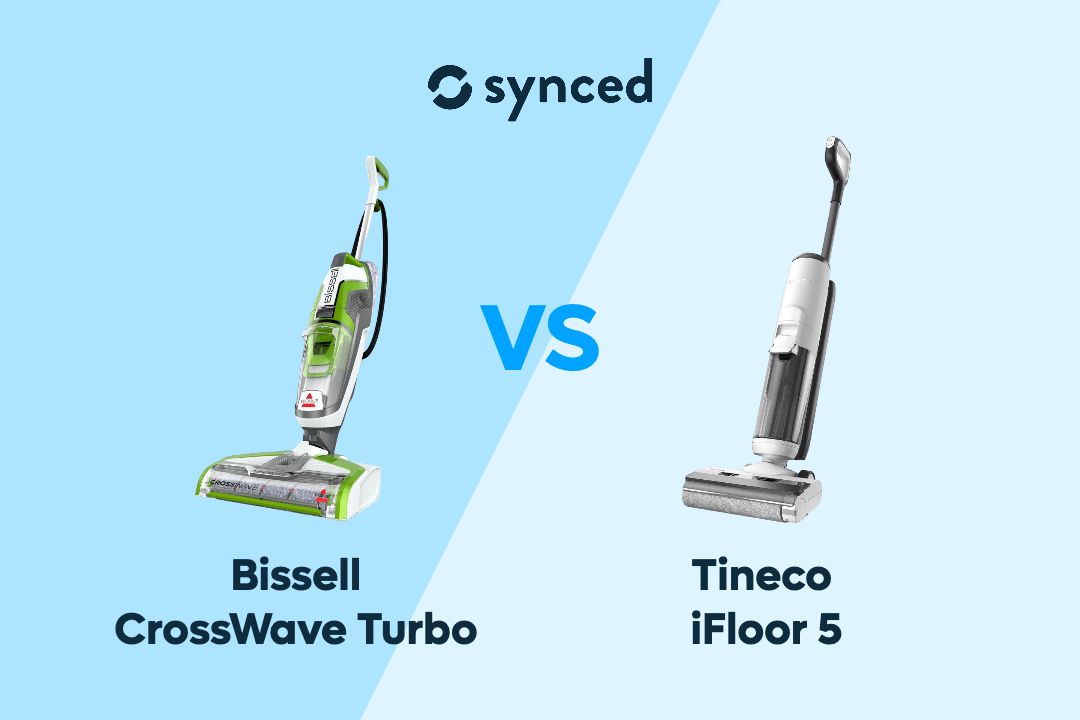TCL QM8 vs C855
By Elisabeth Christ
Updated September 2024

In the ever-evolving world of television technology, TCL continues to push the boundaries with models like the QM8 and C855. Both sets are packed with cutting-edge features, offering an incredible viewing experience that caters to different needs and preferences. Whether you're drawn to the dazzling brightness and gaming prowess of the QM8 or the sophisticated sound and sleek design of the C855, this comparison will delve deep into what makes each model unique, helping you decide which TV deserves a spot in your home.
Key Takeaways
The TCL QM8 and C855 both leverage advanced mini-LED technology to deliver exceptional image quality, but they differ in their approach to performance and features. The QM8, with its impressive 2,321 nits peak brightness and 144Hz refresh rate, is tailored for those who prioritize high-intensity gaming and ultra-vivid visuals. On the other hand, the C855, with its Onkyo 2.1.2 channel sound system and refined design, offers a more balanced experience, especially for viewers who value immersive audio and a sleek aesthetic. Both models support HDR formats like Dolby Vision IQ and HDR10+, ensuring that every scene is rendered with stunning detail and contrast.


TCL QM8 Mini-LED TV
Premium Smart TV with Exceptional Picture Quality
✓ Sleek design with slim bezel
✓ APIQ Gen 3 processor
✓ Anti-glare screen
✓ Up to 144Hz

TCL C855 Mini-LED TV
High-performance QD Mini-LED Powerhouse
✓ AiPQ PRO Processor
✓ 1,344 local dimming zones
✓ Up to 144Hz refresh rate
✓ 5600:1 contrast ratio
#1 Price Design

TCL C855
When it comes to design, the TCL QM8 sets a high bar with its sleek metal bezel and angled center-mounted stand, giving it an elegant yet robust presence. This model is versatile in its appeal, particularly with its unique 98-inch version that opts for side-mounted feet to accommodate its size. In contrast, the TCL C855 embraces a more minimalist approach with an ultra-slim frame and a metal stand that exudes durability. The design choices of both models reflect their commitment to aesthetics, but the C855’s streamlined, modern design may appeal more to those who prioritize a sophisticated look in their living space.
Price-wise, the QM8 is positioned at a higher premium, likely due to its expansive screen size options and advanced mini-LED technology. However, the C855 offers a compelling alternative at a more accessible price point while still delivering high-end features. Both models come with a remote control, but the QM8 takes it a step further with a built-in mic, which can be manually activated for voice commands—a feature the C855 lacks. The C855’s remote might feel more basic, with its plastic build and simple layout, which contrasts with the QM8’s more refined and feature-rich remote.
#2 Image Quality

TCL QM8
The TCL QM8 and C855 both deliver stunning visuals, but they take different paths to achieve this. The QM8 utilizes QLED screen technology paired with mini-LED backlighting, boasting 1080 local dimming zones that create an impressive contrast ratio with deep blacks and minimal blooming effects. Its peak brightness reaches an extraordinary 2,321 nits, ensuring vibrant and dynamic imagery even in brightly lit rooms. The C855, on the other hand, is equipped with a mini-LED panel and 1,344 local dimming zones, offering a similarly deep black level and vibrant color reproduction. Its peak brightness, though slightly lower at 1,891 nits, still holds its ground, providing excellent performance in both bright and dim settings.

TCL C855
The C855 further enhances its image quality with HDR support, including Dolby Vision IQ and HDR10+ Adaptive, which adjust in real-time based on ambient lighting conditions, ensuring that every scene is displayed with optimal brightness and contrast. Meanwhile, the QM8 supports a range of HDR formats as well, including Dolby Vision IQ and HDR10+, but with the added benefit of a higher refresh rate of up to 144Hz, making it an excellent choice for fast-paced action and gaming. The QM8’s DCI-P3 coverage of 97% and BT.2020 coverage of 76% also means it handles a wide color gamut with precision, rivaling the C855’s 97.5% UHDA-P3 and 76.3% BT.2020 coverage, making both TVs exceptional in delivering true-to-life colors.
#3 Sound Quality

TCL QM8
Sound quality is another area where both the QM8 and C855 excel, yet with distinct approaches. The QM8 features a 2.1 channel speaker system with 40 watts of power, including a dedicated 20-watt subwoofer that ensures deep bass and clear dialogue. Its audio performance is versatile, with a multi-band equalizer and various audio modes like Movie mode, which adds a cinematic punch to the sound, making it well-suited for diverse content types. On the other hand, the C855 comes with a more sophisticated 2.1.2 channel, 60-watt Onkyo speaker array that includes up-firing speakers and additional drivers for a more immersive audio experience. This setup not only provides heft and bass depth but also supports Dolby Atmos, DTS, and DTS-HD, offering a more expansive soundstage that envelops the listener.
While the QM8 excels in clarity and dialogue, particularly in Standard mode, the C855’s audio system is designed to provide a richer, more layered sound. The inclusion of up-firing speakers in the C855 contributes to its ability to deliver a more three-dimensional audio experience, which can significantly enhance the viewing experience, especially for movie enthusiasts. Both models, however, offer advanced sound customization options, allowing users to fine-tune the audio to their preference.
#4 Smart Features & Connectivity

TCL C855
In terms of smart features, the TCL QM8 and C855 are closely matched, both running on the Google TV platform, which provides a smooth and user-friendly interface for accessing a wide range of streaming services and apps. The QM8, however, stands out with its built-in microphone for voice commands, allowing for hands-free control, while the C855 relies on its more basic remote without this integrated feature. Both TVs support Google Assistant, Alexa, and Apple HomeKit, ensuring seamless integration with smart home devices.
Connectivity options are robust on both models, with the QM8 offering four HDMI ports (including two HDMI 2.1 ports) and the C855 featuring two HDMI 2.1 and two HDMI 2.0 ports. The QM8 also includes Chromecast built-in and AirPlay 2, making it easier to stream content from mobile devices, while the C855 adds Bluetooth 5.2 and Wi-Fi 6 for faster, more stable wireless connections. The QM8’s additional composite-video/analog audio input might appeal to those with legacy devices, whereas the C855’s streamlined ports focus more on modern connectivity needs.
#5 Gaming

TCL QM8
When it comes to gaming, both the TCL QM8 and C855 offer compelling features that cater to both casual and competitive gamers. The QM8’s 120Hz refresh rate can be boosted to 144Hz through HDMI input 1, and its Game Accelerator feature pushes the envelope with up to 240Hz VRR gaming at 1080p resolution. This, combined with its low input lag of 13ms in Game Master mode, makes the QM8 an outstanding choice for gamers seeking ultra-responsive gameplay and smooth motion.

TCL C855
The C855, while similar in offering 4K 144Hz support, is particularly notable for its AMD FreeSync Premium Pro support, ensuring tear-free and stutter-free gaming experiences. Its Game Bar feature allows users to quickly adjust settings for optimal performance during gameplay. The C855’s input lag is slightly higher at 14.6ms, but it still delivers smooth and immersive gaming experiences, particularly with its excellent graphics rendering and deep black levels that enhance visual details in games. Both models excel in offering features that will satisfy the needs of most gamers, making the choice between them a matter of preference for specific gaming features and overall gaming experience.
Final Thoughts

TCL QM8 vs C855
Choosing between the TCL QM8 and C855 ultimately depends on your specific needs and preferences. If you're a gaming enthusiast who demands top-tier performance and blazing brightness, the QM8 is likely the better fit, offering features like 240Hz VRR gaming and a higher peak brightness that cater to fast-paced action. However, if you prefer a TV that combines solid gaming capabilities with a more immersive audio experience and sleek design, the C855 stands out with its superior sound system and elegant look. Each model has its strengths, so consider what aspects of TV viewing are most important to you before making your decision.
If you like to read more about Smart TVs, check out our other relevant guides here:
Hisense U6K vs U7K
Hisense U6K vs U6N
Hisense U7K vs U8K
Hisense U7K vs U7N
Hisense U7N vs U8K
Hisense U8K vs U8N
Hisense U7N vs U8N
Hisense U6N vs U7N
Don't miss out on tech
Subscribe to our newsletter to stay up to date on the latest tech trends and guides on the best gadgets around.


